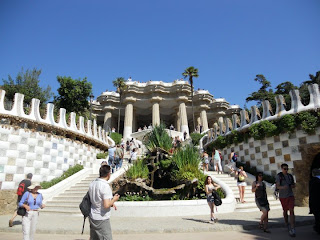
So you want to make your city known to the world? Perhaps you should invest in a massive renovation of your local port in order to host an international competition for the longest contested over trophy in all of sports. That is exactly what Valencia, Spain decided to do in order to host the 2007 America’s Cup, which turned out to be one of history’s most noteworthy America’s Cups. (http://32nd.americascup.com/en/multimedia/games/vs/index.php) This was the first time the America’s Cup was held in a European nation and also the first time the Cup was won by a team from a landlocked country, Switzerland. The America’s Cup remains the Mecca of sailing competitions worldwide and has experienced a dramatic growth over the last 20 years. Its origins date back to 1851, but it had been a relatively low key competition on the global scale until 1983 when Australia won the Cup, taking it from the United States and ending their 132 year winning streak. (http://www.americascup.com/feature-stories/history/) Since then this competition, held every 3 to 6 years, has grown enormously. When the America’s Cup finally hit Valencia, Spain in 2007
 it saw 12 competitors from 10 countries and 5 continents that had sailed racing for the coveted Cup. (http://www.portamericascup.com/en/event.php) To learn more about the America’s Cup, including how the competitors are decided and who is eligible visit the current America’s Cup website at http://www.americascup.com/.
it saw 12 competitors from 10 countries and 5 continents that had sailed racing for the coveted Cup. (http://www.portamericascup.com/en/event.php) To learn more about the America’s Cup, including how the competitors are decided and who is eligible visit the current America’s Cup website at http://www.americascup.com/.
This was perhaps a perfect marriage of sport and politics. The America’s Cup has been growing in popularity but is still struggling to become a mainstream event. Meanwhile Valencia, already a commerce epicenter, has been trying to rebuild itself as a modern tourist city. Together Valencia and the America’s Cup tried to create a tourist destination of the competition by holding it in Europe for the first time. At the time it worked tremendously, bringing in many teams, supporters and revenue. But since then there have been struggles for Valencia’s port. The question has become, what do you do with an empty competition port? One answer is to re-use it, as Valencia successfully did for the controversial 2010 America’s Cup (http://www.sailingscuttlebutt.com/news/07/cf/). But what else can be done with it? That question remains to be answered for certain, but Valencia has done some things already. The port is surrounded by a nice dining and shopping area and is only a few minute walk from the Valencia beach, another beautiful place to visit. http://www.valenciavalencia.com/beaches-in-valencia/arenas-cabanyal-beach.htm


The port itself has an interesting history. Having been the original trading port of the city, its water was not deep enough to remain the industrial port the city needed, so they built a wall in the harbor dividing the America’s Cup port from the industrial port. This move was as much political as it was practical because it allowed the Valencia government to build a tourist destination which would complement their beach and glamorous City of the Arts and Sciences (http://www.cac.es/?languageId=1) as major destinations. Of late they have also developed a Formula 1 race track which follows the outline of the harbor. The collection of these things is certainly worth visiting; though alone the America’s Cup port may not be a travel destination (there isn’t much to do but walk around it).
One cannot help but feel a sense of awe as they stand in the America’s Cup Port surrounded by the buildings erected to the 2007 and 2010 challengers. This Cup has been in the United States, Australia, New Zealand, and from 2007 to 2010, Switzerland. The race has run through two world wars and has been around longer than the modern Olympic Games. Amidst this, though, the America’s Cup is trying to build a bigger and better future. So to stand at the spot where both the city of Valencia and the America’s Cup have tried to build their future it is interesting to contemplate their respective successes. Valencia has undoubtly seen some increased tourism, but not much which has been sustainable. Meanwhile the America’s Cup sees more competitors every race.
After contemplating all of this in the America’s Cup Port the traveler can grab a nice lunch along the marina and then go to the beach for a swim in the Mediterranean. On the way they may also stop at the beachside gym for a nice workout.

A suggested playlist for your walk along the port and the beach:
Where the Boat Leaves From, Zac Brown Band
Take it Back, Jimmy Buffett (written after Australia took the Cup from the U.S. in 1983)
Boats to Build, Jerry Jeff Walker
If I Had A Boat, Lyle Lovett
I’m On A Boat, Andy Samburg & T. Pain

























